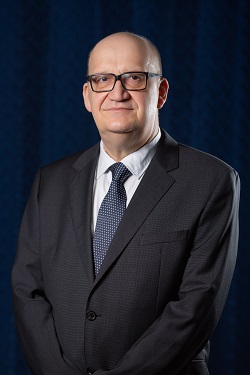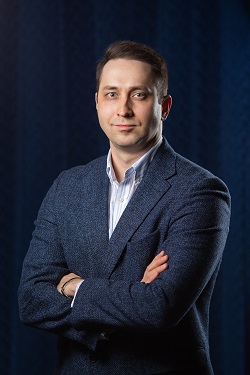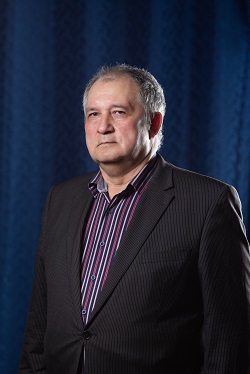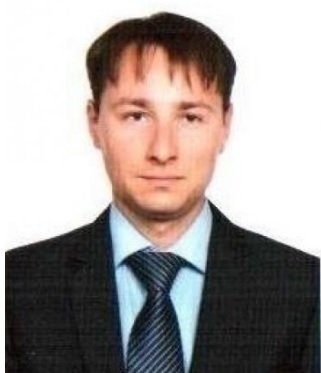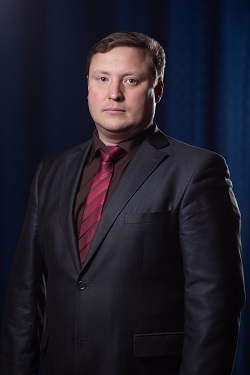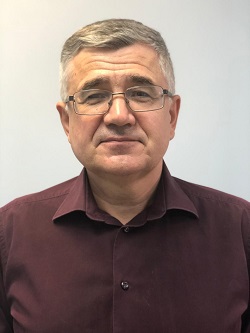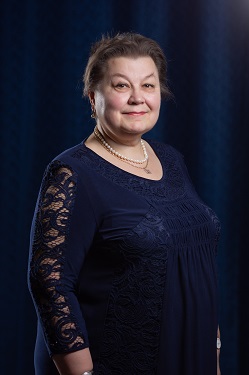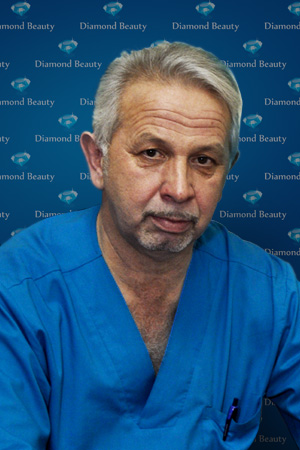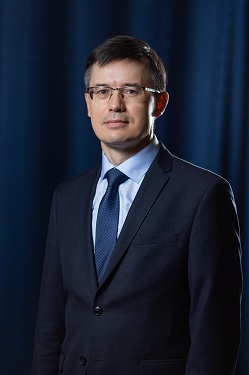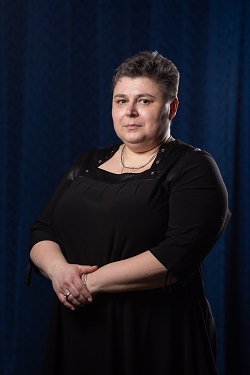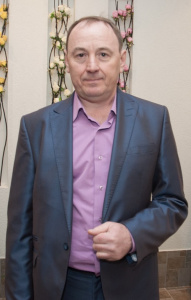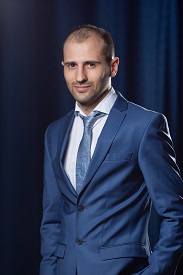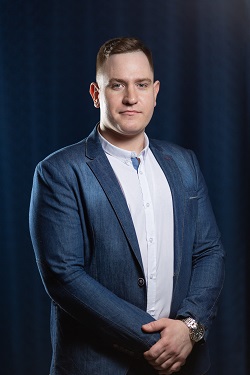Departments
Department of Traumatology and Orthopedics
- Basic information
- Educational activity
- Staff
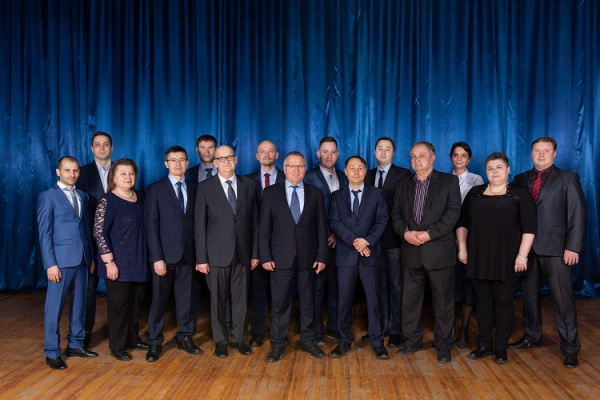
The range of scientific interests of the department's employees is polytrauma, damage to bones, joints, spine, destructive and degenerative diseases of the musculoskeletal system. The department trains IV and V year students of medical, pediatric, medical and preventive faculties. Unified global information networks have been created at the department’s bases, integrated with patient databases, X-ray archives and the Internet. Using the created distance learning system, students and IPO cadets can receive the necessary information material in real time, evaluate their knowledge, and ask questions to colleagues or teachers. The department has created a scientific laboratory where biomechanical studies of patients are carried out (goniometry, stabilometry, podography), as well as practical classes for students. The department uses modern methods of conducting classes: testing, situational tasks, thematic seminars, conferences. The department is based in specialized departments of 6 clinics (emergency hospital, GVV, City Clinical Hospital №21, City Clinical Hospital №10, City Clinical Hospital №18, RDKB, City Clinical Hospital №13). The training of traumatologists and orthopedists at the department meets the modern requirements of the state educational standard in the specialty «Traumatology and Orthopedics».
HISTORY OF THE DEPARTMENT
The Department of Traumatology and Orthopedics with an IPO course was created in 1966 on the clinical basis of the surgical department of the medical unit of the Ufa Motor-Building Production Association (UMPO). The department was headed by Professor A.M. Penkov, and its first employees were military field surgeons A.N. Zhiltsov, T.T. Bayburin, K.S. Shakhov, R.M. Bogdanov, whose teaching career began at the Department of Hospital Surgery of the Belarusian State Medical Institute. Subsequently, practical healthcare workers M.Sh. were hired as teachers at the department. Sabirov, V.V. Nikitin, V.T. Kanbegov, M.Kh. Tukhvatullin. The main areas of research work of the department during its formation were: neurotrophic consequences of injury, joint damage and their consequences, spinal fractures, compression-distraction osteosynthesis, diaphyseal fractures of the lower leg bones, static insufficiency of the lower extremities. The tradition of the inextricable connection of the educational process, research activities of the department with practical traumatology and orthopedics was continued by the Honored Doctor of the Russian Federation and the Republic of Belarus, Professor V.V. Nikitin, who headed the department from 1982 to 2002. Since 1997, the Department of Traumatology and Orthopedics of the IPO BSMU, and since 2002, the united department has been headed by Doctor of Medical Sciences, Professor B.Sh. Minasov.
Contact Information:
Address: Batyrskaya 39/2
Tel./fax of the head of the department: +7(347)255-76-66
Email: travm.ortoped@bashgmu.ru
Educational and methodological activities
The pedagogical system of universities over the years has accumulated quite a lot of experience in teaching students and cadets. Many teachers have studied forms of learning, different points of view have emerged on the concept and effectiveness of using various forms of the learning process. New forms of education are being searched for and traditional ones are being analyzed in order to create a high level of education for students. Modern requirements for teaching at a medical university have increased due to the rapid development of technology and software, high awareness of students, medical workers and the population. Information technology transforms and improves teaching methods, optimizes assessment and self-education, and facilitates the continuous learning process. At the same time, it is necessary to comply with the fundamental principles of the educational process: a variety of forms of training, the continuity of theory with practice, continuity of learning, and clarity of the material.
An important role in ensuring these principles is played by the use of an interactive form of conducting classes using a multimedia board. An interactive whiteboard combines projection technologies with a touch device, so such a board not only displays what is happening on the computer, but allows you to manage the presentation process, make amendments and adjustments, make notes and comments, ensures active participation in the lesson by students, and saves lesson materials for further use and editing.
Multimedia projection technologies at the Department of Traumatology and Orthopedics with the IPO course are actively used using the interactive whiteboard Interwrite Workspace (resolution 46,500x62,000) for lectures, practical classes, tests and exams when teaching the following sections:
1. Orthopedic examination of patients with lesions of the musculoskeletal system
2. X-ray anatomy and X-ray diagnostics of injuries and diseases of the musculoskeletal system
3. Preoperative planning of surgical treatment of lesions of the musculoskeletal system
4.Topographic anatomy and surgical approaches
5. Intraoperative and postoperative radiation control of surgical treatment of injuries and diseases of the musculoskeletal system.
An important advantage in training is the ability to use elements of a “business game”. During the lesson on the interactive board, it is possible to familiarize yourself, train and subsequently monitor your knowledge on various aspects of radiation monitoring, the structural and functional organization of the
musculoskeletal system, the adequacy of osteosynthesis, and a detailed analysis of clinical cases.
However, the use of multimedia technologies requires careful preparation of the teacher for conducting a lesson, and since the goal of pedagogical work is to identify such forms of organization of the learning process that provide the condition for the full development of students’ personalities in traditional and innovative teaching systems, the use of an interactive whiteboard should be optimally combined with other forms of teaching. The principle of “learn, teach and evaluate”, proposed by Maurice Muller, can be used both by cadets of the Institute of Postgraduate Education and by students, which will diversify the learning process and improve knowledge in all areas of traumatology and orthopedics. A skillful choice of the form of the learning process makes it possible to implement this focus most effectively. The use of multimedia projection technologies optimizes the learning process, allows for online control of the student and shows the real level of knowledge when analyzing clinical situations.
At the department, students are trained in the discipline of traumatology, orthopedics, specialties: general medicine, pediatrics, medical and preventive care. Fifth-year students also study elective disciplines: “road traffic injuries in children and adolescents” and “Orthopedic semiotics based on digital technologies.” The student youth scientific society is actively working at the department. Range of scientific interests: polytrauma, destructive-degenerative diseases of the musculoskeletal system, osteoporosis, congenital pathology of the musculoskeletal system. Students of the department take an active part in scientific and practical conferences, professional societies of specialists, master classes, seminars and competitions.
The department has a fully developed educational and methodological complex for the disciplines studied (see Educational portal).



